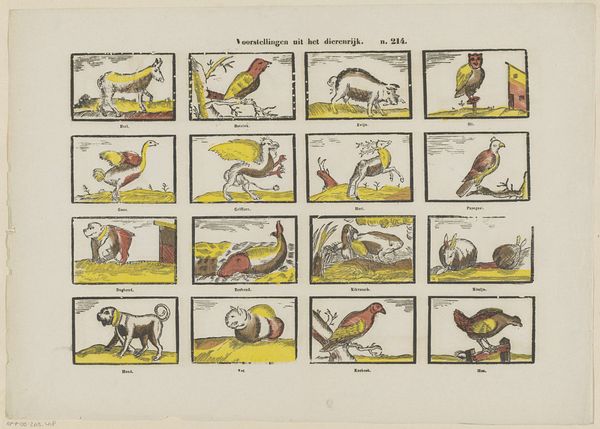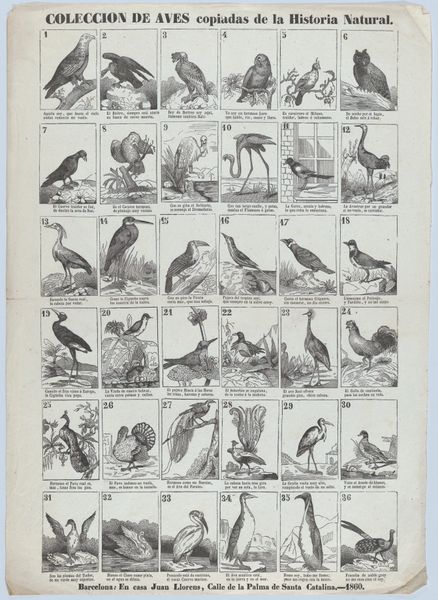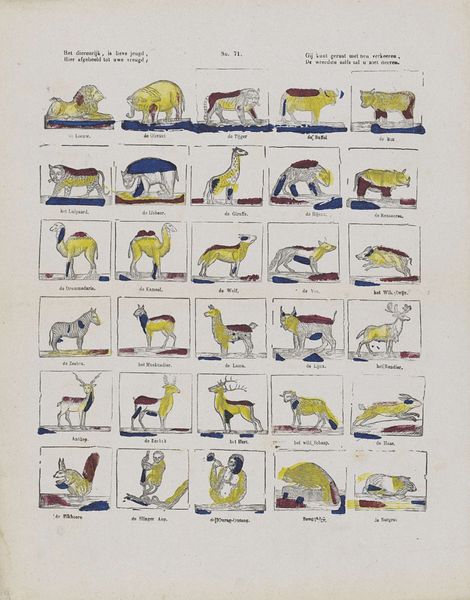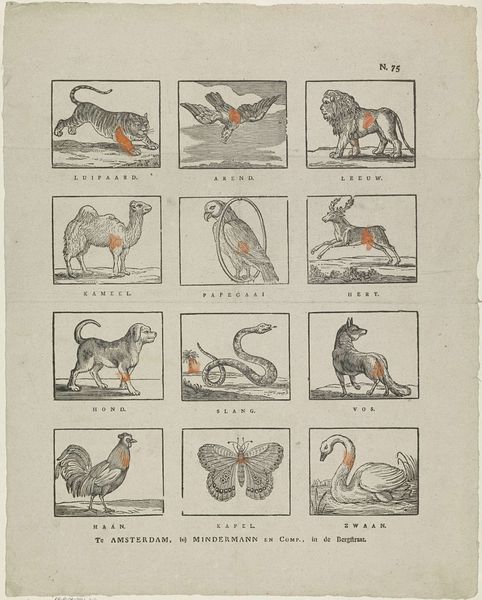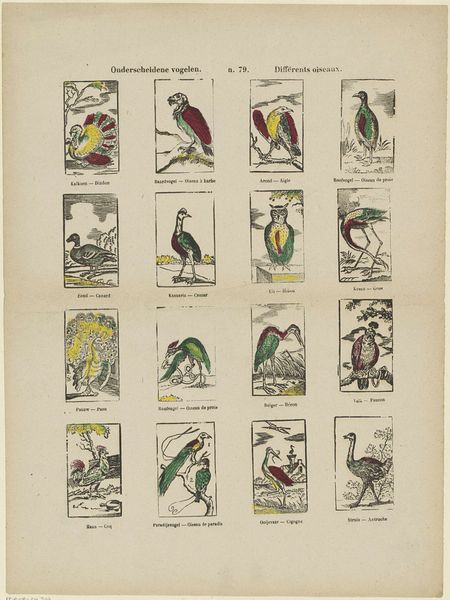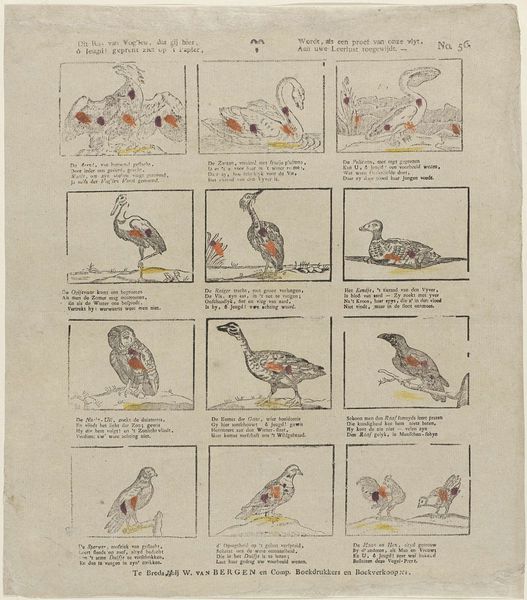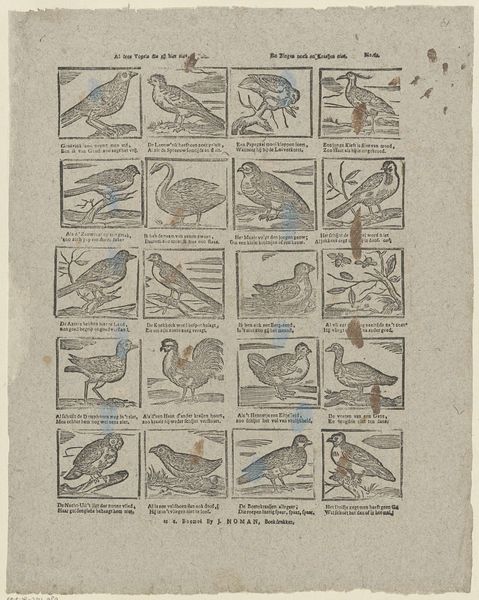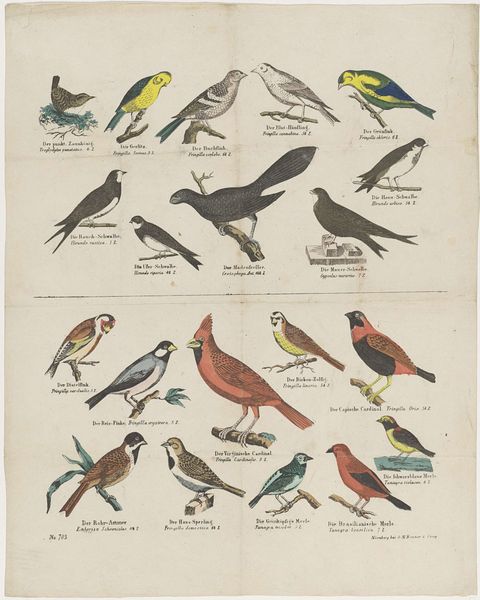
drawing, print, paper
#
drawing
# print
#
bird
#
ukiyo-e
#
paper
Dimensions: height 305 mm, width 389 mm
Copyright: Rijks Museum: Open Domain
Curator: Welcome. Here we have "Museum van vogels," which translates to "Museum of Birds." It's attributed to Lutkie & Cranenburg and likely dates from between 1848 and 1881. It's a print on paper. Editor: It has an interesting folksy quality to it, wouldn't you say? The muted colours and blocky compositions remind me of traditional crafts more than, say, fine art ornithological illustrations. Almost like a catalogue sampler, if you ask me. Curator: In some ways it functions similarly. Produced during a period of expanding public access to knowledge and natural history, it reflects a broader societal trend toward categorization and display. The grid format, presenting twelve distinct bird types, emulates the structure of a museum itself. Editor: The thing that jumps out to me is that the artist's process becomes the visual language. Look closely at the color layering and registration issues between color blocks. It reveals how the image was physically built up. We see it as an aggregate of material gestures, which undermines its intended illusion. It’s hardly trying to represent “birds” naturalistically, really; we're just getting an echo. Curator: Absolutely. What's striking to me is the attempt to create a accessible format – the grid structure mimics scientific displays, inviting viewers, perhaps from the growing middle class, to familiarize themselves with various species of birds, contributing to a wider public understanding of natural history. But its aesthetic qualities, its relation to ‘high’ and ‘low’ art, also determined its cultural value. Editor: The colours are far from vibrant, like it's deliberately under-representing something naturally gorgeous, right? In many ways, the materials and the making become an inadvertent lens that invites us to understand social factors as much as artistic intention. Is the printing technology a kind of limit? Curator: Or is the very act of organizing and classifying birds an exertion of control and a reflection of human's need to bring order? Consider how these prints circulated – as educational tools in schools or affordable collectibles in homes shaping how people thought about nature itself. Editor: Interesting perspective. For me, analyzing how things are made shines an unflattering light on labor that would often be disavowed when approaching something regarded as "high art." Perhaps there are lessons about accessibility even there, even within our current moment. Curator: Yes, indeed. It is clear from both its intended context and materials that this artwork has so much to say to the attentive observer. Editor: I concur, there’s always a kind of productive tension in understanding and valuing older practices alongside where and how they ended up, particularly given contemporary modes of artistic expression.
Comments
No comments
Be the first to comment and join the conversation on the ultimate creative platform.


